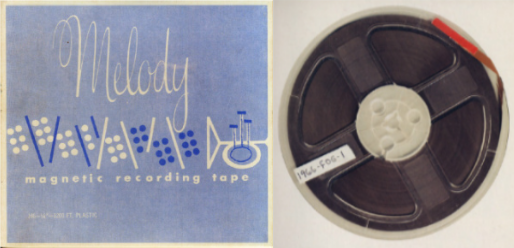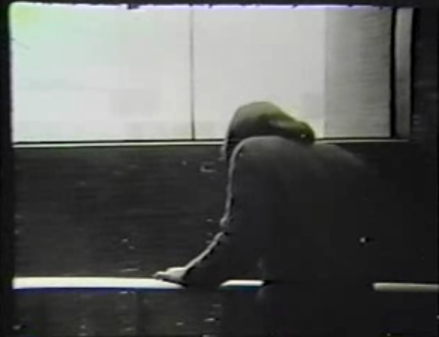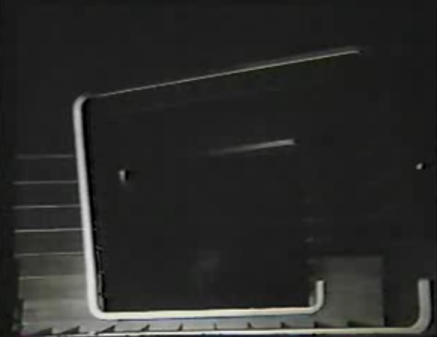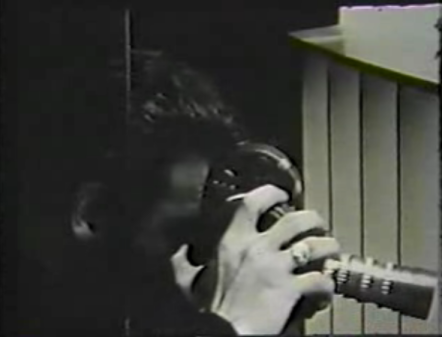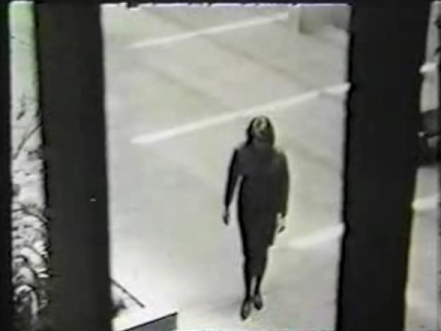Student Films: 1964-1966
JIM MORRISON STUDENT FILMS:
FSU: TOWARD A GREATER UNIVERSITY
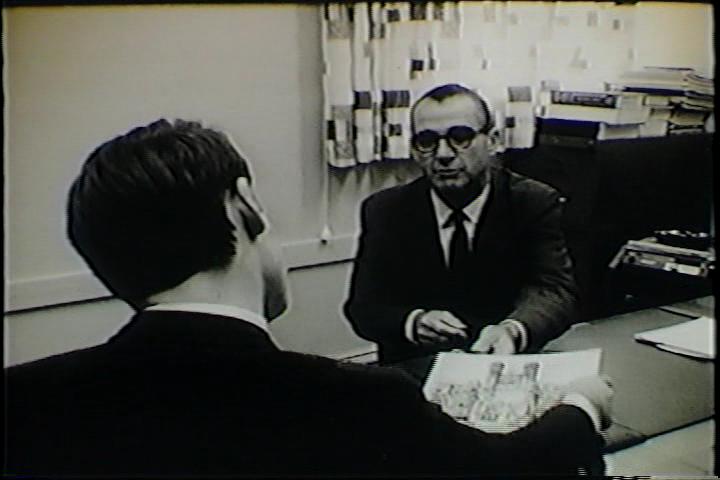
PRODUCER: Werner Vagt
DATE: Late 1963 - Possibly Early 1964
LOCATION: FSU - Tallahassee, FL
COLOR: B&w
LENGTH: 16:55
FORMAT: 16mm
AUDIO: Yes
Info:
This 16mm black and white film is shot in 1963 while Jim Morrison is attending Werner Vagt's cinematography course at the small film school department of FSU, prior to his move to Los Angeles to join film school at UCLA. The film is intended as a public relations film to be broadcast on WFSU-TV, the University's public television station, and is titled Toward A Greater University following FSU President Robert M. Strozier's announcement of his goal to make "Florida State a great university". Original broadcast dates are unknown, however the film is later screened in theaters in other parts of the U.S.
Re-discovered in 2004 amongst a collection of films donated by WFSU to the State Library & Archives of Florida in 1989, Jim Morrison is recognized by an archivist of the library, Jaime Madden, and clips are made available for viewing online in 2005. Complete copies of the film are then made available for purchase. Along with an airing of the clips on VH1, the discovery also makes newspapers across the U.S. and Canada. While not credited in the film, this footage gives a rare, early glimpse of a short-haired Jim Morrison before his days with The Doors.



Screenings:
02/17/1965 - Little Theatre - Mamaroneck, NY
FSU PROJECT
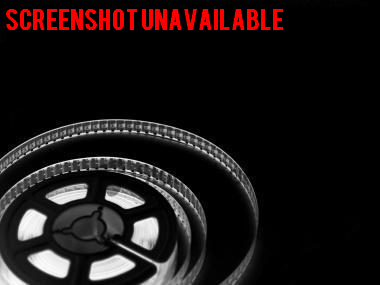
FILM BY: Jim Morrison
DATE: xx/xx/1963
LOCATION: FSU - Tallahassee - FL
COLOR: Unknown
LENGTH: Unknown
FORMAT: Unknown
AUDIO: Unknown
Info:
Another 8mm film project is reported to have been made by Jim Morrison while attending FSU, although the whereabouts of this film are unknown. It appears likely that Jim was involved with multiple film projects while attending FSU that no longer exist, or have yet to be identified by researchers. The 8mm film listed here allegedly features 'guys peeking around bushes' and other obscure scenes shot by Jim.
FIRST LOVE
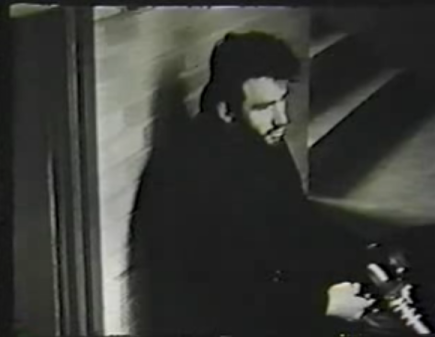
FILM BY: Max Schwartz
DATE: xx/xx/1964
LOCATION: UCLA - Los Angeles - CA
COLOR: B&w
LENGTH: 3:35
FORMAT: 16mm
AUDIO: Silent
UCLA PROJECT - A FEAST OF FRIENDS

FILM BY: Jim Morrison
DATE: 03/13/1965
LOCATION: UCLA - Los Angeles - CA
COLOR: Yes
LENGTH: Unknown
FORMAT: 16mm
AUDIO: Yes
Info:
A 16mm film directed by Jim Morrison during the spring semester of 1965 at UCLA. Upon completion of the project, Jim screens the finished work for his classmates and head of the motion picture division Ed Brokaw, who scolds Jim for failing to properly assemble or splice together strips of film. In a later 1970 interview with Roy Carr of Melody Maker, Jim Morrison tells Roy his short film was titled A Feast Of Friends, and that it has since gone missing. In later years, Ed Brokaw explains that Jim had "finally done it", referring to his success as an artist.
Although portions this project by Jim Morrison can be seen in Oliver Stone's 1991 movie The Doors, the film is in fact a re-creation by Oliver that Ray Manzarek explains is very similar to the original project. Many searches, including one by Oliver Stone himself, have been conducted through UCLA's archives in an attempt to find the film, however nothing has surfaced. By all accounts, the film no longer exists.
"I made one film while at the University called 'A Feast Of Friends' which I've tried to find since but I think they've lost it. It was a film self-conscious of itself--a film about a film." -
Jim Morrison, Melody Maker Interview
"It doesn't exist anymore. It was tossed out with three hundred or so other student movies at the end of the semester. The only films that were saved were the ones that had the negative cut and a composite made for the big show in Royce. The other films were like term papers - seen once and tossed. Just too many to save. So Jim's is gone. Into the dumpster and into the ether." -
Ray Manzarek
"Jim's student film from our UCLA years had caused a buzz that wasn't necessarily all good. His print had fallen apart during the screening. In essence, the professor claimed that Jim was a bad filmmaker because of this faulty editing. In retrospect, I would have to say that it was a bad call on the teacher's part to come down on him so heavy. The visuals of Jim's film are vivid in my mind today. He turned the camera on his own crew. They were in Phil O'Leno's parents house, drinking and smoking grass. Someone rolled a joint and they passed it around. They were high and the camera was hand held. The girlfriend of one of the crew stripped down to her undies and climbed on top of the T.V. She was dancing slowly and was threatening to take it all off. The program on the television just happened to be a documentary on Hitler's army marching into Paris. The combination of the semi-nude girl dancing and the Nazis marching is unforgettable. He was being free, letting the situation develop and capturing the moments on film. It was so pure. So his editing was not so good: his eye and his creativity made up for it." -
Paul Ferrara, Flash Of Eden
"It was a montage--a film that didn't have a story but that was made up of different images. I remember one scene, Jim's girlfriend danced on a television set wearing a garter belt. While she was dancing, a news clip came on showing a Buddhist monk burning himself. Jim could not have known that. It was, for a film maker, sheer good luck. Actually, Jim's film was not the most shocking--another student shot in the city crematory. But nihilism was sort of popular then and student film makers tend to be imitative. I presume Morrison had seen
Triumph of the Will." -
Terry McCartney-Filgate, American Legends Interview
FIVE SITUATIONS FOR CAMERA, RECORDER AND PEOPLE
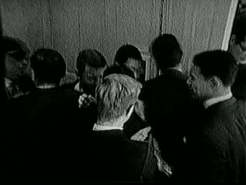
FILM BY: Alex Prisadsky
DATE: 03/20/1965
LOCATION: UCLA - Los Angeles - CA
COLOR: B&w
LENGTH: 6:43
FORMAT: 16mm
AUDIO: Yes
Info:
Jim Morrison is credited with sound in this 16mm, black & white film by Alex Prisadsky. Various portions of the original audio soundtrack recordings are used in the film, however several portions were re-recorded by the director for the final cut. A very special thanks to Alex Prisadsky for sharing details of the film here on MildEquator.com -
"Jim Morrison was the sound man on my first student film at UCLA. I asked a bunch of the crew and my friends at the housing coop where I lived to wear dark suits for the film - Jim didn't have one. That was one reason I asked him to be the sound recordist. The other was that he had shown a remarkable affinity for sound. 6 or 7 of us were in a group that took turns crewing for each other's films on successive Saturdays, in the Spring of 1965. Jim had shot part of his film the previous Saturday, in which we all played a noisy audience. A stag film we were watching broke and the screen was white with projector light. As the sounds of protest escalated, some of us made shadow puppets on the screen and yelled even louder. He had us repeat this for many takes. The experience made us literally high and influenced me to try to create that kind of crowd chaos, in my own way, in my film the next week.
In 'Five Situations', Jim's job was to record sound to go with each scene after filming of the scene was completed (the film was not shot in sync sound). For instance, after the bottle breaking scene, he had someone break some more bottles so he could mic it closely. Maddeningly, many of the bottles were bouncing instead of breaking. After awhile I yelled 'cut', but he insisted on more bottle smashes until he got what he wanted. After we finished shooting all the picture takes of the bathroom scene, we did another run through for sound. Jim decided he wanted to be in the mob, not outside it, during the jostling. He stood in the middle of the group in what was essentially a mosh pit, recording the concussions as well as everything else. When I was editing the film, I decided to try slowing down the sound to see how it "worked". The scene worked much better with the sound slowed down this way, so I transferred it and put it in. I did the same with the bottle breaking scene.
Long digression: The concept of judging an edit on whether it 'worked' or not, yes or no, black or white, was introduced to us by Edgar Brokaw. He taught the advanced editing class and the script writing class that both Jim and I took. He was to have been the advisor for our Saturday Workshop group. (Due to his illness, another professor took over.) Brokaw was harshly critical of Jim's film at the student screening because Jim had failed to 'double splice' his edits and they wouldn't go through the projector (ironically, much like the broken stag film in his project). For all that, Brokaw was among the few on the faculty who respected Jim's talent. I remember seeing Brokaw years later, probably the early 70's; he had a big poster of Jim with The Doors on the wall of his office. He said something like "Jim made it work", meaning he found a way to turn his vision into art."
Alex Prisadsky
http://www.Prisadsky.net
Copyright © 2011 Alex Prisadsky
A Special thanks to Alex Prisadsky for his contribution to this page! To watch Five Situations For Camera, Recorder and People, please visit http://www.prisadsky.net or click HERE to watch the film on MildEquator.com!





Screenings:
12/10/1965 - UCLA Royce Hall Auditorium - Westwood, CA
12/11/1965 - UCLA Royce Hall Auditorium - Westwood, CA
12/17/1965 - UCLA Royce Hall Auditorium - Westwood, CA
12/18/1965 - UCLA Royce Hall Auditorium - Westwood, CA
12/19/1965 - UCLA Royce Hall Auditorium - Westwood, CA
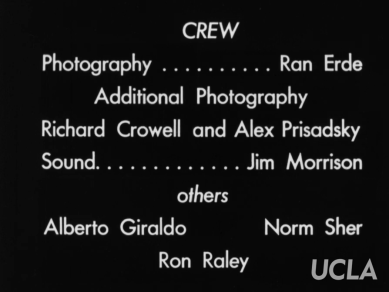 Jim Morrison Is Credited With Sound In Five Situations For Camera, Recorder And People
Jim Morrison Is Credited With Sound In Five Situations For Camera, Recorder And People
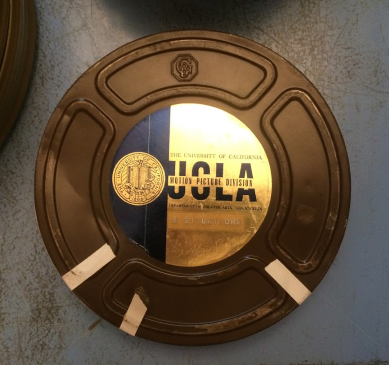 Five Situations For Camera, Recorder And People Original Film Can
Five Situations For Camera, Recorder And People Original Film Can
PATIENT 411: A PROGRESS REPORT
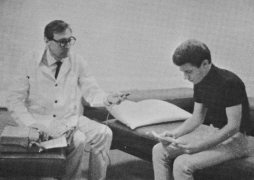
FILM BY: Ronald Raley
DATE: 03/xx/1965
LOCATION: UCLA - Los Angeles - CA
COLOR: B&w
LENGTH: 8:25
FORMAT: 16mm
AUDIO: Yes
Info:
Described as "A faux case study of a male hustler, produced by the California Institute of Neuropsychiatry" by UCLA, this student film by Ronald Raley credits 'J. Morrison' onscreen. Jim's role in the film is said to be that of a cameraman and partial director. This film resides in the UCLA Film & Television Archives and is occasionally shown at public events.
Screenings:
12/10/1965 - UCLA Royce Hall Auditorium - Westwood, CA
12/11/1965 - UCLA Royce Hall Auditorium - Westwood, CA
12/17/1965 - UCLA Royce Hall Auditorium - Westwood, CA
12/18/1965 - UCLA Royce Hall Auditorium - Westwood, CA
12/19/1965 - UCLA Royce Hall Auditorium - Westwood, CA
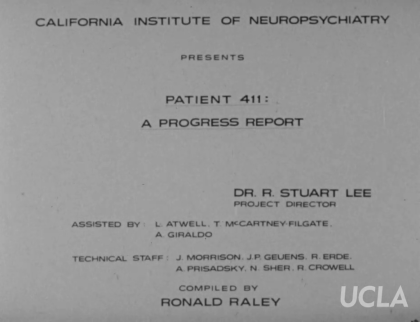 Jim Morrison Is Credited As J. Morrison
Jim Morrison Is Credited As J. Morrison
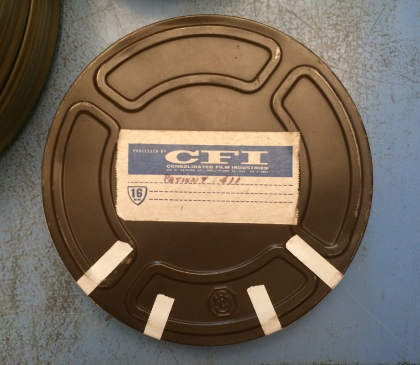 Patient 411: A Progress Report Original Film Can
Patient 411: A Progress Report Original Film Can
RAY MANZAREK STUDENT FILMS:
THE WINO AND THE BLIND MAN
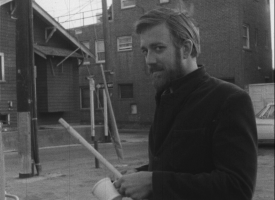
FILM BY: Jose Gonzalez
DATE: xx/xx/1964
LOCATION: UCLA - Los Angeles - CA
COLOR: B&W
LENGTH: 14:00
FORMAT: 16mm
AUDIO: Yes
Info:
Ray Manzarek's first appearance on film. This is fellow UCLA classmate Jose Gonzalez's 1964 student film titled The Wino And The Blind Man. Niko Kopp plays the wino, and Ray plays the part of the blindman. The story follows a wino who is always running out of money, who then notices a blindman receiving money for his needs. He gets the idea to try his own hand at the act by pretending to be blind, in which he is unsuccessful in a comical way.
In early April of 1965, Jose Gonzalez wins UCLA's first Bill Dana Theater Arts Award for the making of this film, a $500.00 award with first priority to be given to Mexican-Americans, and it is later given screenings during UCLA's fifth semi-annual student film screening event at Royce Hall Auditorium in May. In March of 1968, Jose Gonzalez is shockingly arrested for the brutal murder and mutilation of his then girlfriend and UCLA co-ed, Rita Letsinger. The film now resides in the UCLA Film & Television Archive.

Screenings:
05/19/1965 - Directors Guild Theater - Hollywood, CA (Press Screening)
05/21/1965 - UCLA Royce Hall Auditorium - Westwood, CA
05/22/1965 - UCLA Royce Hall Auditorium - Westwood, CA
EVERGREEN
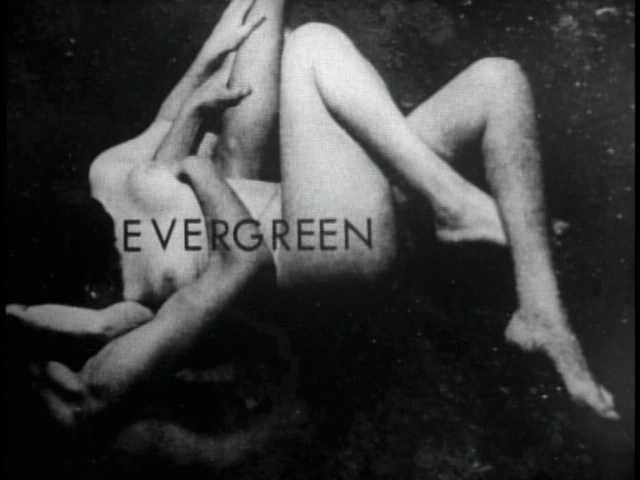
FILM BY: Raymond D. Manczarek - 'Ray Manzarek'
DATE: 11/xx/1964
LOCATION: UCLA - Los Angeles - CA
COLOR: B&W
LENGTH: 12:32
FORMAT: 16mm
AUDIO: Yes
Info:
Ray's UCLA student film from 1964, starring Dorothy Fujikawa, and Henry Crismonde (aka Hank Olguin). At the start of The Doors career, Hank Olguin allows the group to use his living room and piano for their very first rehearsal in September of 1965. Ray's Venice Beach apartment is used as a shooting location for this film, and the Whisky A Go Go can be seen, at which The Doors will make their debut performance as house band in 1966. An artist by the name of Billy Lee Riley is performing at the Whisky during this time period, and newspapers indicate that this artist is at this venue in mid to late November of 1964. John De Bella is enrolled as cameraman for this film, and later joins The Doors in 1968 as a Feast Of Friends crew member, working as a cameraman during select shows in August and September of that year.
Soundtrack material for Evergreen includes Henrietta by Ray Manzarek's band Rick And The Ravens, a cover of a Jimmy Dee & The Offbeats track. The opening track to the film is Nirvana by Herbie Mann & The Bill Evans Trio. A jazz piece titled The Young Rabbits by The Jazz Crusaders, released in 1962, is also featured.
The first known UCLA screenings of Evergreen take place between May 21st and 22nd, 1965 at Royce Hall during the New Film Things event, with a press screening taking place beforehand at the Directors Guild Theater in Hollywood on May 19th. This film is officially released on the The Doors Collection DVD in 1999 as a bonus feature, and the original currently resides in the UCLA Film & Television Archive where it has undergone restoration in recent years.
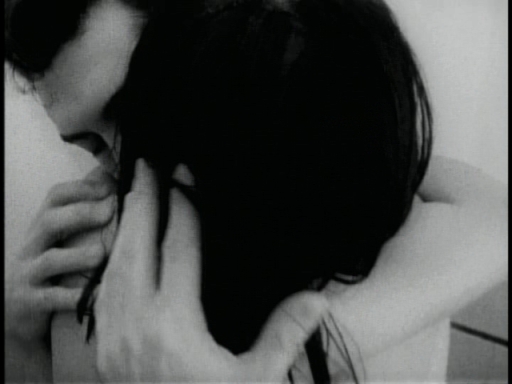
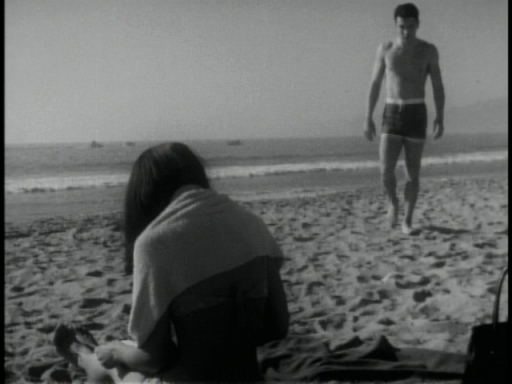
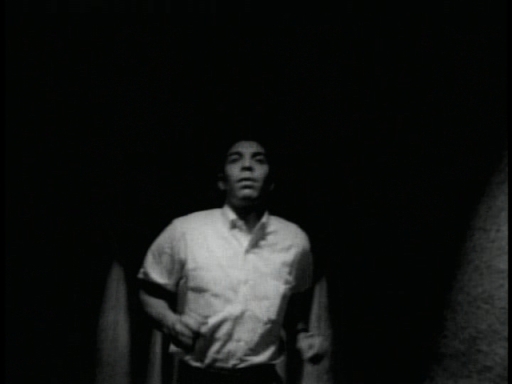
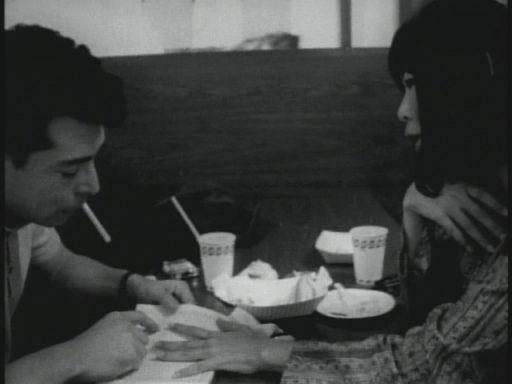
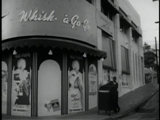
Soundtrack:
Herbie Mann & The Bill Evans Trio - Nirvana
The Jazz Crusaders - The Young Rabbits
Rick And The Ravens - Henrietta
Screenings:
05/19/1965 - Directors Guild Theater - Hollywood, CA (Press Screening)
05/21/1965 - UCLA Royce Hall Auditorium - Westwood, CA
05/22/1965 - UCLA Royce Hall Auditorium - Westwood, CA
01/06/1968 - Cinema Theatre - Los Angeles, CA
03/28/1968 - Academy Theater - San Diego, CA
04/13/1968 - Continental Theater - Cleveland, OH
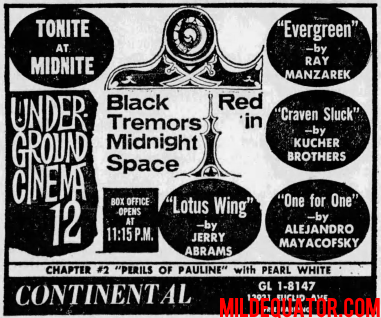
Advertisement For A Screening Of Evergreen in Cleveland, 1968
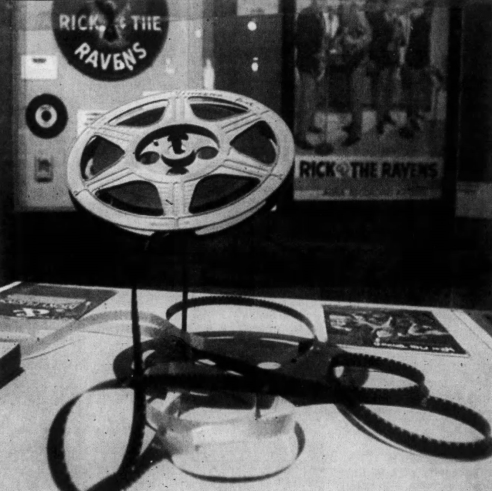
16mm Print Of Evergreen On Display At The Rock n' Roll Hall Of Fame & Museum In 2007
WHO AND WHERE I LIVE

FILM BY: Raymond D. Manczarek - 'Ray Manzarek'
DATE: xx/xx/1965
LOCATION: UCLA - Los Angeles - CA
COLOR: Color
LENGTH: 8:00
FORMAT: 8mm
AUDIO: Yes
Info:
Who And Where I Live is a lost 8-minute, 8mm color design film by Ray Manzarek featuring Dorothy Fujikawa, and is presumably shot at their Venice Beach apartment. At UCLA's Royce Hall during the Op, Pop & Kicky Flicks student film screening event in December 1965, the project is used as a stage film in which The Doors are said to perform a musical 'soundtrack' while the audience watches on. The UCLA screenings of this film presumably take place on December 10th and 11th, 1965 with The Doors providing music, however subsequent showings may have taken place on later dates (December 17th, 18th and 19th). Although screening dates for this film are known, it is currently unknown as to when Ray produces this film. A likely time period for the completion of Who And Where I Live is the winter semester of 1964-65. At the present date, UCLA reports that this film is missing from their archives, and no copies are known to have survived.
Screenings:
12/10/1965 - UCLA Royce Hall Auditorium - Westwood, CA
12/11/1965 - UCLA Royce Hall Auditorium - Westwood, CA
12/17/1965 - UCLA Royce Hall Auditorium - Westwood, CA
12/18/1965 - UCLA Royce Hall Auditorium - Westwood, CA
12/19/1965 - UCLA Royce Hall Auditorium - Westwood, CA

INDUCTION
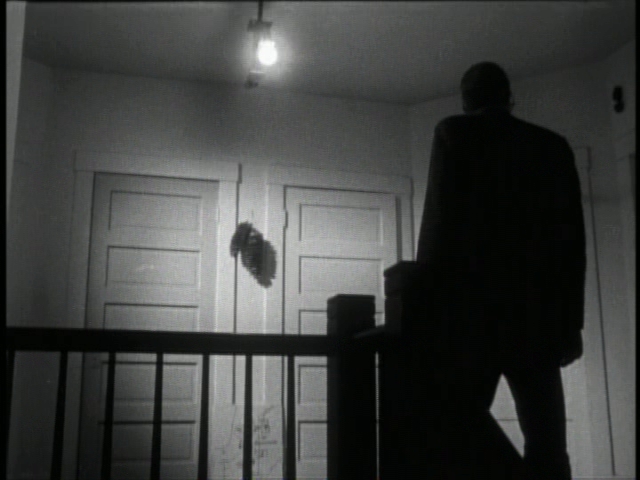
FILM BY: Raymond D. Manczarek - 'Ray Manzarek'
DATE: 04-05/xx/1965
LOCATION: UCLA - Los Angeles - CA
COLOR: B&W
LENGTH: 15:04
FORMAT: 16mm
AUDIO: Yes
Info:
Ray's second UCLA film shot between April and May of the spring semester of 1965. The film stars Ray Manzarek as himself, Kathy Zeller, and Dorothy Fujikawa, with Christopher Gray credited as cameraman. American actor Hy Pyke also plays a role in the film. A showing of Ray's previously completed UCLA film Evergreen takes place towards the end of the film, and appearances are made during the party scene by fellow classmates Jim Morrison and his girlfriend Mary Werbelow, Paul Ferrara, John De Bella, as well as Ray's brother Jim Manczarek who is seen playing piano. Also shown is the Lucky U Cafe, a UCLA student hangout where The Doors later enjoy meals as a group. The opening line of the film states, "I'll open doors to strange and exotic countries", spoken by Kathy Zeller.
Ray Manzarek's band Rick And The Ravens contributes music to the film, with a cover of Dancing In The Street played during the party scene followed by a partial cover of Satisfaction by The Rolling Stones. Other music featured in the production are various jazz artists including Paul Horn, and The Modern Jazz Quartet.
The first known UCLA student film festival screenings of Induction take place between May 13th and May 28th, 1966 at Royce Hall. Ray later indicates this film is an autobiographical tale of his experiences with a breakup and a subsequent joining of the U.S. Army in 1960. The film is given an official release on The Doors Collection DVD in 1999 and currently resides in the UCLA Film & Television Archive where it has undergone restoration in recent years. The whereabouts of a production tape featuring the live recordings by Rick And The Ravens is unknown and may no longer exist.





Soundtrack:
Paul Horn - Mirage For Miles
Rick And The Ravens - Dancing In The Street
Rick And The Ravens - Satisfaction
The Paul Horn Quintet - Abstraction
The Modern Jazz Quartet - One Never Knows
Screenings:
05/13-14,20,22,27-28/1966 - UCLA Royce Hall Auditorium - Westwood, CA (Exact Screening Dates Unknown)
11/xx/1966 - Unicorn Theater - San Diego, CA
09/11/1971 - Cinema Theatre - Los Angeles, CA
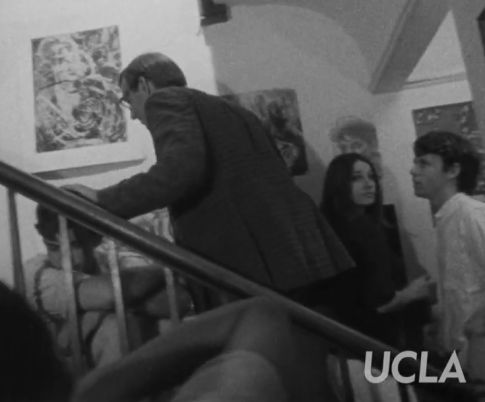 John De Bella, Ray Manzarek, Mary Werbelow, and Jim Morrison in Ray Manzarek's Student Film Induction
John De Bella, Ray Manzarek, Mary Werbelow, and Jim Morrison in Ray Manzarek's Student Film Induction
RELATED FILMS:
END OF SUMMER - PAUL FERRARA
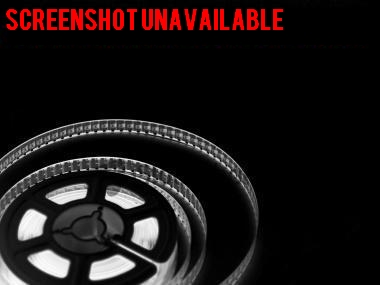
FILM BY: Paul Ferrara
DATE: xx/xx/1965
LOCATION: UCLA - Los Angeles - CA
COLOR: B&W
LENGTH: 15:00
FORMAT: 16mm
AUDIO: Yes
Info:
A UCLA student film by The Doors official photographer and Feast Of Friends director Paul Ferrara. This film stars Richard Blackburn and Jeannie Appel, with photography by Stanton Kaye.
"My 170 film project The End Of Summer starred my ex-roommate Dick Blackburn and my old girlfriend from El Camino, Jeannie A. Colin Young was the instructor in charge of my class. Under his tutorship I put together a story of two young people who go for a bike ride at the beach and stumble upon a mysterious house. The house was the castle near Hamburger Square # 11 1/2 Anchorage in Venice Beach where Ron Ellis lived. They find the door open and go in. They are alone. They explore. They put on so me music. It was bossa nova, "The Girl from Ipanema", and they dance. They sink to the floor. They make out." - Paul Ferrara, Flash Of Eden
Screenings:
05/19/1965 - Directors Guild Theater - Hollywood, CA (Press Screening)
05/21/1965 - UCLA Royce Hall Auditorium - Westwood, CA
05/22/1965 - UCLA Royce Hall Auditorium - Westwood, CA
PHOTOGRAPH:
 Paul Ferrara & Film Crew - Photograph Courtesy Of Paul Ferrara
Paul Ferrara & Film Crew - Photograph Courtesy Of Paul Ferrara
Les angeS Dorment - FELIX VENABLE
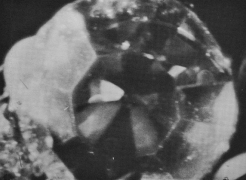
FILM BY: Felix Venable
DATE: xx/xx/1965
LOCATION: UCLA - Los Angeles - CA
COLOR: B&w/Color
LENGTH: 9:00
FORMAT: 16mm
AUDIO: Yes
Info:
Properly titled Les angeS Dorment, this UCLA student film by Felix Venable was shot in both black and white and color in 1965. Jim Morrison is thought to have taken part in the production of this film, however details are unknown. Mary Morhoff is also credited along with Felix. The film is described as "A series of vignettes set to varying scores are exemplified by highly refined and intuitive camerawork and editing. This influential film is intensely and quietly psychedelic, suggestive of acid experiences and a shifting sense of fragmented consciousness."
"I remember Felix telling stories about his years of living in Berkeley, attending U.C. Berkeley and then driving a bus for a living. Felix was an undergraduate transfer into UCLA. A great storyteller. Also a consummate bullshitter. Two personality traits that worked well together in Felix. He has been mythologized as Mephistopheles to Jim's Faust. Maybe so, but life is always more complicated than a literary analogy. There was a third running buddy in those UCLA film school and (drug fueled) post-UCLA film school adventures - Phil O'leno. Phil's still alive, somewhere in Northern California. Felix had applied to, and been accepted into the UCLA Film School Graduate Program, beginning in the fall of 1970, when he died of stomach cancer on November 14th, 1970."
By David Thompson, UCLA Film School Graduate & Hollywood Bowl Cameraman
A Special Thanks to David for providing his commentary to MildEquator.com!
SCREENSHOT:
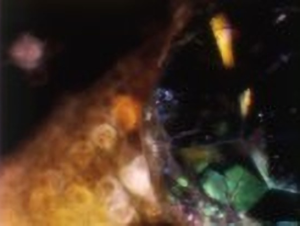
Screenings:
12/10/1965 - UCLA Royce Hall Auditorium - Westwood, CA
12/11/1965 - UCLA Royce Hall Auditorium - Westwood, CA
12/17/1965 - UCLA Royce Hall Auditorium - Westwood, CA
12/18/1965 - UCLA Royce Hall Auditorium - Westwood, CA
12/19/1965 - UCLA Royce Hall Auditorium - Westwood, CA
12/08/1972 - UCLA Royce Hall Auditorium - Westwood, CA
NEWSPAPER PROFILE:
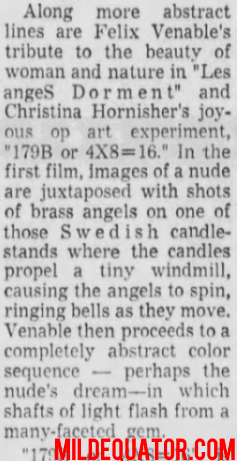
ZEN MASTER - FRANK LISCIANDRO

FILM BY: Frank Lisciandro
DATE: xx/xx/1966
LOCATION: UCLA - Los Angeles - CA
COLOR: B&w
LENGTH: 3:00
FORMAT: 16mm
AUDIO: Yes
Info:
A UCLA student film by Frank Lisciandro, friend and photographer of The Doors. This film is said to have been shot in 1966 and runs at 3 minutes.
CALL IT COLLAGE '66 - NETTIE PENA
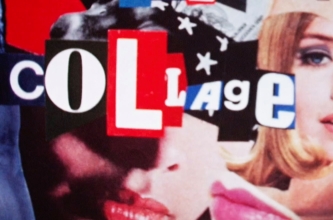
FILM BY: Nettie Peña
DATE: xx/xx/1967
LOCATION: UCLA - Los Angeles - CA
COLOR: Yes
LENGTH: 13:00
FORMAT: 16mm
AUDIO: Yes
Info:
A UCLA student film by Nettie Peña that includes recordings and photographs of The Doors from their first performance at the London Fog. Original screening programs describe this film as "An advanced design project" featuring music by "The Doors" and Carol Weber. Screenings are held at Royce Hall Auditorium in December 1966 in the eighth semi-annual student film screening event titled Conflict. Nettie's 1965 film is titled Cum Joyn Us and another 1966 film is titled The Wonderful World Of Wigs.
"The artists in my film Call it Collage '66 were my friends. My sister, Estela Peña created paper Collages; Joan Churchill was a filmmaker who loved the camera; Tony Berlant who lived at Venice Beach created metal assemblages; Judith Aston my roommate was a modern dancer in the UCLA Department of Dance; Ben Sakoguchi had experienced the WWII Japanese internment, he painted images of war, Jim Morrison and Ray Manzarek were my friends in Film School. I used The Doors London Fog music that I had recorded and the pictures I took in my film Collage." -
Nettie Peña, 2020
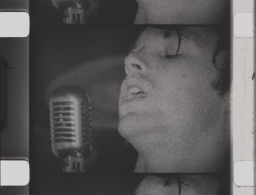
Screenings:
12/09/1966 - UCLA Royce Hall Auditorium - Westwood, CA
12/10/1966 - UCLA Royce Hall Auditorium - Westwood, CA
12/16/1966 - UCLA Royce Hall Auditorium - Westwood, CA
12/17/1966 - UCLA Royce Hall Auditorium - Westwood, CA
12/18/1966 - UCLA Royce Hall Auditorium - Westwood, CA
12/08/1972 - UCLA Royce Hall Auditorium - Westwood, CA
TAPE BOX & REEL:
